It looks like you're using an Ad Blocker.
Please white-list or disable AboveTopSecret.com in your ad-blocking tool.
Thank you.
Some features of ATS will be disabled while you continue to use an ad-blocker.
share:
Here's something i came across recently with regards to exploring the greater context for the cave of petroglyphs discovered in Ecuador, relating to
this thread;
Mysterious Cave found in Ecuador
I was trying to determine which culture had created the petroglyphs, and decided upon Manteno Culture, all things considered, and that the caves related to their maritime port at Chirije.
Manteno Culture
Whilst looking at Pre-Colombian Ecuadorian artifacts i was quite taken with their spindle whorls, amusingly many of these resemble our notion of anceint UFO'S...

But there was one piece relating to Manteno Culture that seemed somewhat different in quality and the motifs involved, which appeared to me amazingly close to motifs of Easter Island as seen in their petroglyphs, here is the piece;
www.ancientresource.com...
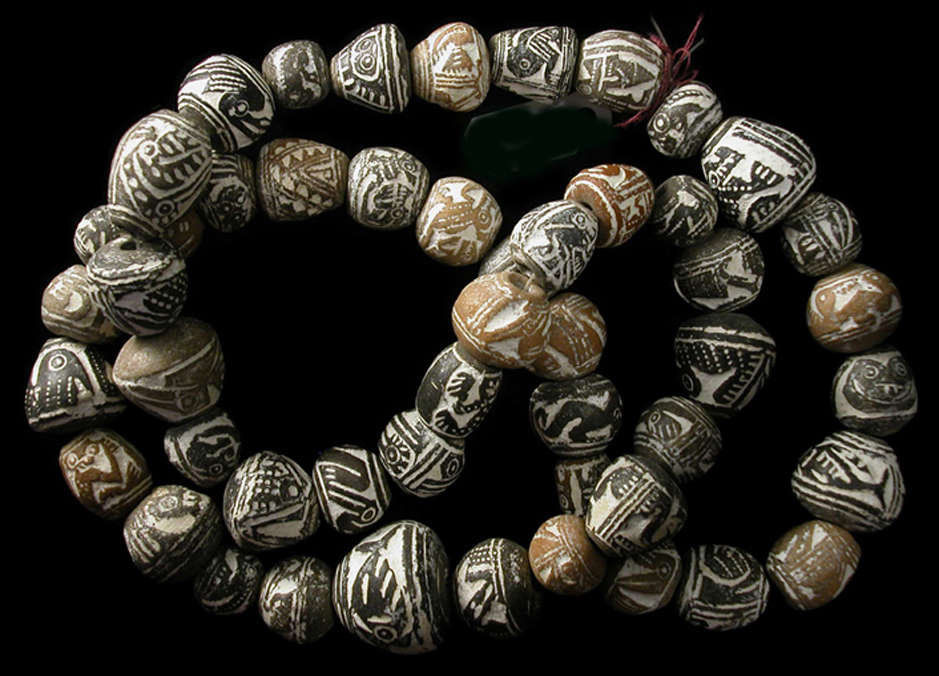
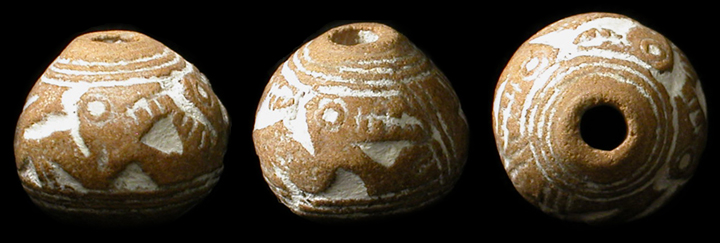
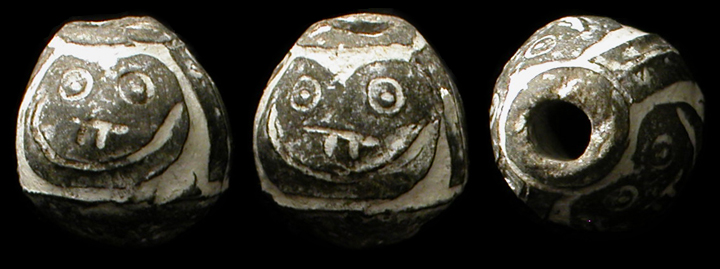
The bird man motif is the one that first caught the attention, as that is most important with regards to Easter Island, examples below from Easter island;
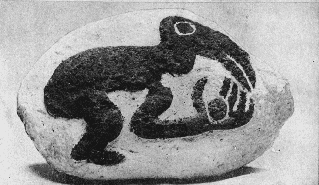

There is also seen the Creator God of Easter Island, the well named 'Make Make'
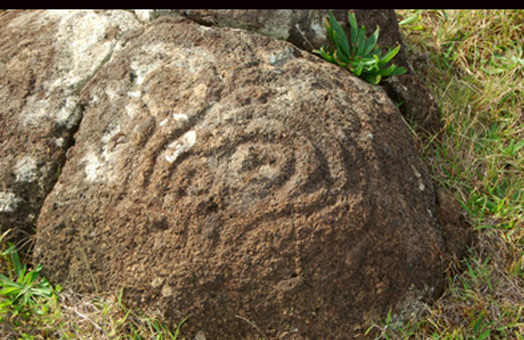
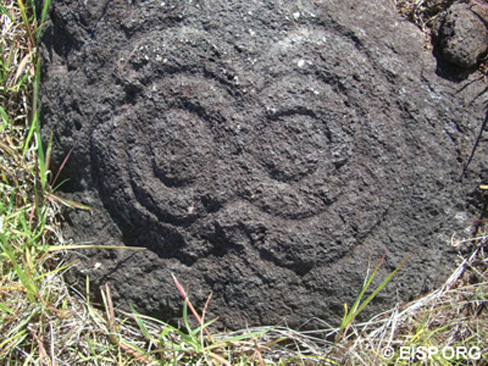
We also seen the fish motif commonly found on Easter Island, here seen in conjunction with 'Make Make'

The motifs and style of the Ecuadorian piece thus show curious correspondance with Easter Island. Also with regards to the petroglyphs found in the cave at Chirije similarities could be found between these and Easter Island Rongo Rongo symbolism.
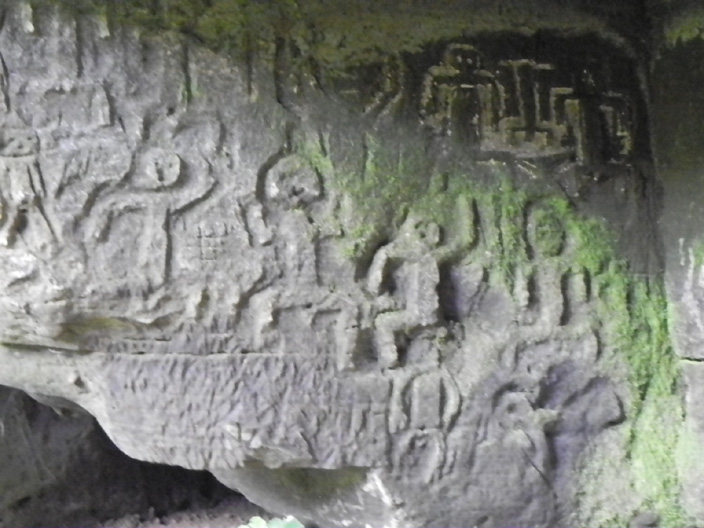
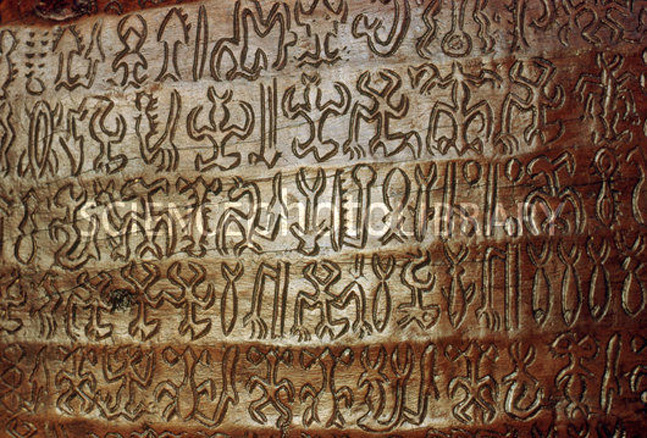
Though there is much comparative seen in petroglyphs seen world wide, and i don't find the comparisons here as striking as for the bead motifs.
The evidence for some form of relationship between Manteno culture and Easter Island then i find highly possible based upon the iconography of the beads, though what sort of relationship that would be is difficult to say of course, whether it was through trade, as the Manteno trade extensively along the entire Western coast of South America, or that one was from early times a colony of the other, i couldn't say.
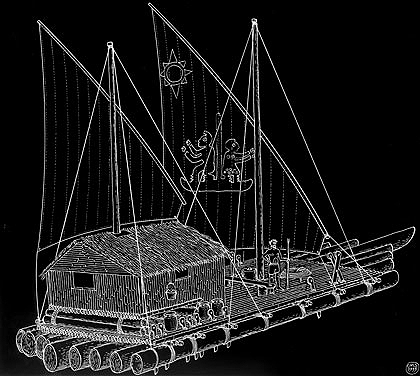
There is certainly more archaeology needs doing at the port of Chirije, and perhaps in the future more will emerge regarding these possible contacts with Easter Island
firstamericans.blogspot.co.uk...
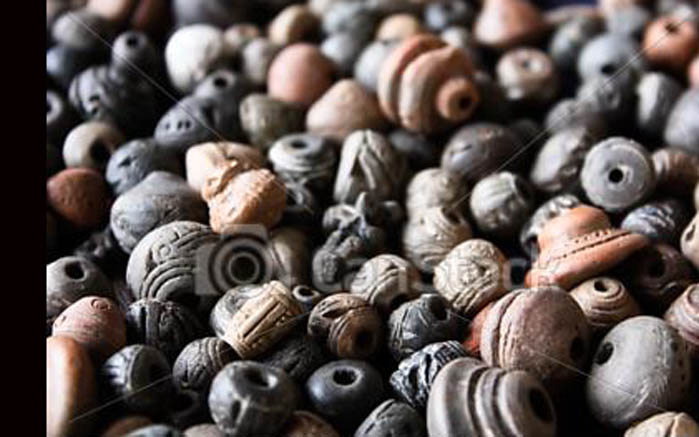
Mysterious Cave found in Ecuador
I was trying to determine which culture had created the petroglyphs, and decided upon Manteno Culture, all things considered, and that the caves related to their maritime port at Chirije.
Manteno Culture
As early as 2400 B.C. the people of coastal Ecuador took a critical step: they began to voyage on the ocean. Eventually they were landing on Isla de la Plata, an island 22 miles off shore. Not only did they start landing there, they began colonizing the island and building ceremonial sites.
Whilst looking at Pre-Colombian Ecuadorian artifacts i was quite taken with their spindle whorls, amusingly many of these resemble our notion of anceint UFO'S...

But there was one piece relating to Manteno Culture that seemed somewhat different in quality and the motifs involved, which appeared to me amazingly close to motifs of Easter Island as seen in their petroglyphs, here is the piece;
www.ancientresource.com...



The bird man motif is the one that first caught the attention, as that is most important with regards to Easter Island, examples below from Easter island;


There is also seen the Creator God of Easter Island, the well named 'Make Make'


We also seen the fish motif commonly found on Easter Island, here seen in conjunction with 'Make Make'

The motifs and style of the Ecuadorian piece thus show curious correspondance with Easter Island. Also with regards to the petroglyphs found in the cave at Chirije similarities could be found between these and Easter Island Rongo Rongo symbolism.


Though there is much comparative seen in petroglyphs seen world wide, and i don't find the comparisons here as striking as for the bead motifs.
The evidence for some form of relationship between Manteno culture and Easter Island then i find highly possible based upon the iconography of the beads, though what sort of relationship that would be is difficult to say of course, whether it was through trade, as the Manteno trade extensively along the entire Western coast of South America, or that one was from early times a colony of the other, i couldn't say.

There is certainly more archaeology needs doing at the port of Chirije, and perhaps in the future more will emerge regarding these possible contacts with Easter Island
firstamericans.blogspot.co.uk...

edit on 4-2-2013 by Kantzveldt because: (no reason given)
edit on 4-2-2013 by Kantzveldt because: (no
reason given)
Theres only a few great contributers to this section, Ancient & Lost Civilizations. Slayer, Zorgon,Kiwifoot, Serbsta, Skyfloating and a few more, but
I dare say you are another in the making I love your threads, so please, keep up the good work & thank you for sharing
reply to post by Kantzveldt
See,now this is the reason I first began perusing ATS.I am not a college educated person yet I enjoy threads that teach me something.I have long held the belief that there was a connection between Easter Island and the peoples of Ancient Ecuador.Fascinating stuff.Keep it coming.S&F for you my friend.
See,now this is the reason I first began perusing ATS.I am not a college educated person yet I enjoy threads that teach me something.I have long held the belief that there was a connection between Easter Island and the peoples of Ancient Ecuador.Fascinating stuff.Keep it coming.S&F for you my friend.
reply to post by mardukiscoming
Thanks, those whorls are so different from what is generally found in Ecuador and so similar to Easter island motifs it's a real puzzle.
reply to post by n00bUK
I guess everyone who contributes has a slightly different approach and area of interest, which helps keep the board informative and engaging.
There were also these found on the island of Puna which have previously been considered as strongly resembling the Easter island bird man
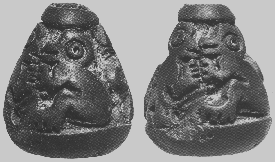
Thanks, those whorls are so different from what is generally found in Ecuador and so similar to Easter island motifs it's a real puzzle.
reply to post by n00bUK
I guess everyone who contributes has a slightly different approach and area of interest, which helps keep the board informative and engaging.
There were also these found on the island of Puna which have previously been considered as strongly resembling the Easter island bird man

Puná Island is an Island off the coast of southern Ecuador at approximately 80 degrees west longitude and 3 degrees south latitude. It is located at the head of the Gulf of Guayaquil, south of the mouth of the Guayas River and the city of Guayaquil
edit on 4-2-2013 by
Kantzveldt because: (no reason given)
Thanks for this thread Kantz. Did you read about Tupac Yupanqui and his expeditions?
www.galapagos.to...
en.wikipedia.org...
Some more relevant information, if you want to take in consideration :
www.abovetopsecret.com...
* This story of the navigation of Tupac Inca to the islands of Ninachumpi and Avachumpi or Hahua chumpi is told by Balboa [sic, Cabello de Valboa] as well as by Sarmiento. They were no doubt two of the Galápagos Islands. Nina chumpi means fire island, and Hahua chumpi outer island. See my introduction to the Voyages of Sarmiento, p. xiii; and Las Islas de Galapagos by Marco Jimenes de la Espada.
www.galapagos.to...
Many historians are skeptical that the voyage ever took place. Supporters have usually identified the islands with the Galápagos Islands. It has also been suggested that one of the islands was Easter Island, where oral traditions have claimed that a group of long-eared hanau eepe came to the island from an unknown land.[
en.wikipedia.org...
Some more relevant information, if you want to take in consideration :
www.abovetopsecret.com...
It amazes me that contact between Easter island and the mainland is still disputed, with all of the physical evidence.
But genetics don't lie, here's an abstract from a paper on the presence of native american HLA ( lukemia) antibodies in Easter islanders.
rstb.royalsocietypublishing.org...
And a little discussion on the implications of this 2012 paper,
anthropogenesis.kinshipstudies.org...
That pretty much seals the deal.
But genetics don't lie, here's an abstract from a paper on the presence of native american HLA ( lukemia) antibodies in Easter islanders.
It is now generally accepted that Polynesia was first settled by peoples from southeast Asia. An alternative that eastern parts of Polynesia were first inhabited by Amerindians has found little support. There are, however, many indications of a ‘prehistoric’ (i.e. before Polynesia was discovered by Europeans) contact between Polynesia and the Americas, but genetic evidence of a prehistoric Amerindian contribution to the Polynesian gene pool has been lacking. We recently carried out genomic HLA (human leucocyte antigen) typing as well as typing for mitochondrial DNA (mtDNA) and Y chromosome markers of blood samples collected in 1971 and 2008 from reputedly non-admixed Easter Islanders. All individuals carried HLA alleles and mtDNA types previously found in Polynesia, and most of the males carried Y chromosome markers of Polynesian origin (a few had European Y chromosome markers), further supporting an initial Polynesian population on Easter Island. The HLA investigations revealed, however, that some individuals also carried HLA alleles which have previously almost only been found in Amerindians. We could trace the introduction of these Amerindian alleles to before the Peruvian slave trades, i.e. before the 1860s, and provide suggestive evidence that they were introduced already in prehistoric time. Our results demonstrate an early Amerindian contribution to the Polynesian gene pool on Easter Island, and illustrate the usefulness of typing for immunogenetic markers such as HLA to complement mtDNA and Y chromosome analyses in anthropological investigations.
rstb.royalsocietypublishing.org...
And a little discussion on the implications of this 2012 paper,
Erik Thorsby’s study appears to be the first clear documentation of a genetic contribution of Amerindians to Polynesians that happened prior to the Peruvian slave trade in the 19th century. He detected two Amerindian-specific HLA alleles (A*02:12 and B*39:05) among unadmixed Easter Islanders. These alleles complement the otherwise-typical Polynesian pool of Easter Islanders. It’s unlikely that these alleles were more wide-spread in Polynesia in the past (as Thor Heyerdahl would want to have it). Thorsby offers a better explanation: in accordance with the findings of chicken remains with Polynesian mtDNA in El Arenal, southern Chile and the suggestive evidence of pre-Columbian Polynesian ancestry in Mocha Island, Chile, he writes, “…There is strong evidence that Polynesians had been in South America early, i.e. in pre-Columbian time. After having arrived in South America, some of them may have returned to Polynesia, including Easter Island, not only taking the sweet potato and bottle gourd, etc., but also some native Americans with them.”
anthropogenesis.kinshipstudies.org...
That pretty much seals the deal.
reply to post by Kantzveldt
Wow!!!! S&F !! thank you so much for this lovely post. You, Slayer and a few others really take my breath away with your articles. So well, put together thought out, and presented in an easy to digest, beautiful manner. Thank you so much for contributing to the wonderful quality of ATS. Every day I browse the boards seeing one line posts, vids with out descriptions, complete made up BS and then there are the gems you work so hard to put together for us. I really appreciate it, and I just wanted you to know.
Now, for me. I love seeing the wonderful stone work of our Earthly ancestors. So much beauty, in something many of us take for granted. Do any of you stop and think of the time that was put into each of these beads?
(borrowed your image mate.)

Beads like this could take up to an hour each with modern tools. Let alone using other pieces of stone that break down, as these were tooled at the time. Rounding the stones first, drilling the hole likely using a stick and some sand, would take an hour or more on it's own. Then carving the figures into them using nothing more than stones or soft crude metals. Tools today need to be resharpened, retooled or replaced after work like this and that would be using high carbon steel, titanium or diamond edge tools. I'm always blown away by the beauty man can create with a little time and effort. We don't see this as much today. Stone is considered a material of the past, and those that are worked are done using chemicals, several thousand dollar machines and computers. I truly love it. It's the little things in life, that are the true beauty.
Wow!!!! S&F !! thank you so much for this lovely post. You, Slayer and a few others really take my breath away with your articles. So well, put together thought out, and presented in an easy to digest, beautiful manner. Thank you so much for contributing to the wonderful quality of ATS. Every day I browse the boards seeing one line posts, vids with out descriptions, complete made up BS and then there are the gems you work so hard to put together for us. I really appreciate it, and I just wanted you to know.
Now, for me. I love seeing the wonderful stone work of our Earthly ancestors. So much beauty, in something many of us take for granted. Do any of you stop and think of the time that was put into each of these beads?
(borrowed your image mate.)

Beads like this could take up to an hour each with modern tools. Let alone using other pieces of stone that break down, as these were tooled at the time. Rounding the stones first, drilling the hole likely using a stick and some sand, would take an hour or more on it's own. Then carving the figures into them using nothing more than stones or soft crude metals. Tools today need to be resharpened, retooled or replaced after work like this and that would be using high carbon steel, titanium or diamond edge tools. I'm always blown away by the beauty man can create with a little time and effort. We don't see this as much today. Stone is considered a material of the past, and those that are worked are done using chemicals, several thousand dollar machines and computers. I truly love it. It's the little things in life, that are the true beauty.
Originally posted by Kantzveldt
Here's something i came across recently with regards to exploring the greater context for the cave of petroglyphs discovered in Ecuador, relating to this thread;
Mysterious Cave found in Ecuador
I was trying to determine which culture had created the petroglyphs, and decided upon Manteno Culture, all things considered, and that the caves related to their maritime port at Chirije.
Manteno Culture
As early as 2400 B.C. the people of coastal Ecuador took a critical step: they began to voyage on the ocean. Eventually they were landing on Isla de la Plata, an island 22 miles off shore. Not only did they start landing there, they began colonizing the island and building ceremonial sites.
Whilst looking at Pre-Colombian Ecuadorian artifacts i was quite taken with their spindle whorls, amusingly many of these resemble our notion of anceint UFO'S...
But there was one piece relating to Manteno Culture that seemed somewhat different in quality and the motifs involved, which appeared to me amazingly close to motifs of Easter Island as seen in their petroglyphs, here is the piece;
www.ancientresource.com...
The bird man motif is the one that first caught the attention, as that is most important with regards to Easter Island, examples below from Easter island;
There is also seen the Creator God of Easter Island, the well named 'Make Make'
We also seen the fish motif commonly found on Easter Island, here seen in conjunction with 'Make Make'
The motifs and style of the Ecuadorian piece thus show curious correspondance with Easter Island. Also with regards to the petroglyphs found in the cave at Chirije similarities could be found between these and Easter Island Rongo Rongo symbolism.
Though there is much comparative seen in petroglyphs seen world wide, and i don't find the comparisons here as striking as for the bead motifs.
The evidence for some form of relationship between Manteno culture and Easter Island then i find highly possible based upon the iconography of the beads, though what sort of relationship that would be is difficult to say of course, whether it was through trade, as the Manteno trade extensively along the entire Western coast of South America, or that one was from early times a colony of the other, i couldn't say.
There is certainly more archaeology needs doing at the port of Chirije, and perhaps in the future more will emerge regarding these possible contacts with Easter Island
firstamericans.blogspot.co.uk...
edit on 4-2-2013 by Kantzveldt because: (no reason given)edit on 4-2-2013 by Kantzveldt because: (no reason given)
The last photo of the strange writing is the Rongo-Rongo script from Easter Island.
Professor Benon Z. Szalek from the University of Szczecin (Poland) discovered that the Rongo-Rongo writing were almost identicle to the writings in the Indus Valley (think Mahenjo Daro here).
The whole story is outlined in Igor Witkowski' book "Axis of the World", just an amazing book which disputes the Bering bridge theory main stream academics want to push. It is Highly Recommended if you want to know about the connections with regard to other languages including Hungarian/Japanese/English and believe it or not "Basque".
Hi,
I'm just about to go out so can't insert the image for you but I bought a book in Peru that had a little section about how Easter Island was connected via land to Peru. A professor or scientist had found that out and then was ostracized by his peers because of his claims about the similarities between some of the stone work in Peru and on the island.
So perhaps, that ties in with the Ecuadorian culture too.
Here's a link to the page I was referring to...
www.world-mysteries.com...
I'm just about to go out so can't insert the image for you but I bought a book in Peru that had a little section about how Easter Island was connected via land to Peru. A professor or scientist had found that out and then was ostracized by his peers because of his claims about the similarities between some of the stone work in Peru and on the island.
So perhaps, that ties in with the Ecuadorian culture too.
Here's a link to the page I was referring to...
www.world-mysteries.com...
edit on 5/2/13 by Cruff because: Found
it...
edit on 5/2/13 by Cruff because: Link
reply to post by Kantzveldt
hrm interesting, are you saying its the same culture or that 2 different cultures traded and influenced each other?
I think the other question is, are there any artifacts in both cultures or just the last, maybe it wasn't trade but a group of explorers that brought wares with them and thus that's how they ended up there, unless there are thousands upon thousands of beads in storage or something?
There are definitely, similarities between the two. And I have long held that man has been trading forever, probably as soon as they saw the first ant take a ride on a leaf in a puddle or something heh. if we take a gander at some of the sizes of building we have accomplished in the past, I really don't see why it would be that hard to make larger versions of smaller boats for long distance trading.
Sure there would be thousands of trial and errors maybe even spanning hundreds of years, but lets face it, there was no face book, twitter or linked in, they had time,, that's all they freakin had lol.
hrm interesting, are you saying its the same culture or that 2 different cultures traded and influenced each other?
I think the other question is, are there any artifacts in both cultures or just the last, maybe it wasn't trade but a group of explorers that brought wares with them and thus that's how they ended up there, unless there are thousands upon thousands of beads in storage or something?
There are definitely, similarities between the two. And I have long held that man has been trading forever, probably as soon as they saw the first ant take a ride on a leaf in a puddle or something heh. if we take a gander at some of the sizes of building we have accomplished in the past, I really don't see why it would be that hard to make larger versions of smaller boats for long distance trading.
Sure there would be thousands of trial and errors maybe even spanning hundreds of years, but lets face it, there was no face book, twitter or linked in, they had time,, that's all they freakin had lol.
reply to post by punkinworks10
Thanks for that, the model i'd be looking at would be a possible Polynesian colony in Ecuador, region of Chirijie, dating back to an early period, which maintained links with Easter Island whilst slowly merging with the Amerindians, a genetic study from that region then would be needed to indicate how likely that possibility is.
That area of Ecuador was eventually assimilated by the Chimu of the coastal region of Peru, who were themselves later assimilated by the Inca, who could then have been made aware of Easter Island.
reply to post by Trueman
Hi Trueman, the possible model i've suggested above would provide a context for the Inca mounting an expedition to Easter Island, once they'd absorbed the Chimu Empire and their ocean going capability...that was the best advertisement i've ever seen by the way!
reply to post by Hijinx
The technique of the beads manufacture is interesting, that kaolin was used to set off the red or black stone carved motifs. There's no doubt this is of Ecuadorian manufacture and that they're not uncommon, the hard part is finding similar craft techniques of Easter Island, there's the bird on the boulder which has been set off in the same manner , but i'd like to find more examples.
reply to post by Cruff
Well that would have made things easier...
Thanks for that, the model i'd be looking at would be a possible Polynesian colony in Ecuador, region of Chirijie, dating back to an early period, which maintained links with Easter Island whilst slowly merging with the Amerindians, a genetic study from that region then would be needed to indicate how likely that possibility is.
That area of Ecuador was eventually assimilated by the Chimu of the coastal region of Peru, who were themselves later assimilated by the Inca, who could then have been made aware of Easter Island.
reply to post by Trueman
Hi Trueman, the possible model i've suggested above would provide a context for the Inca mounting an expedition to Easter Island, once they'd absorbed the Chimu Empire and their ocean going capability...that was the best advertisement i've ever seen by the way!
reply to post by Hijinx
The technique of the beads manufacture is interesting, that kaolin was used to set off the red or black stone carved motifs. There's no doubt this is of Ecuadorian manufacture and that they're not uncommon, the hard part is finding similar craft techniques of Easter Island, there's the bird on the boulder which has been set off in the same manner , but i'd like to find more examples.
reply to post by Cruff
Well that would have made things easier...
edit on 5-2-2013 by Kantzveldt because: (no reason given)
Those of you interested may find this site of interest.
users.on.net...
Further support of your theory as well as other ideas . . .
He makes a case of Easter Islanders coming from South America backed by genetics.
Further into this thread he looks at plants, and animals as further proof of contacts not supported by mainstream views. I believe in Ancient times the Land Mass was greater and the peoples of the day were more advanced then mainstream anthropology would have you believe.
users.on.net...
Further support of your theory as well as other ideas . . .
He makes a case of Easter Islanders coming from South America backed by genetics.
Further into this thread he looks at plants, and animals as further proof of contacts not supported by mainstream views. I believe in Ancient times the Land Mass was greater and the peoples of the day were more advanced then mainstream anthropology would have you believe.
edit on 5-2-2013
by LittleBirdSaid because: add to
I don't have much to say other than excellent job with this thread. I think I'll have to keep an eye on you and your threads. Again, excellent work.
Originally posted by Kantzveldt
Here's something i came across recently with regards to exploring the greater context for the cave of petroglyphs discovered in Ecuador, relating to this thread;
Mysterious Cave found in Ecuador
I was trying to determine which culture had created the petroglyphs, and decided upon Manteno Culture, all things considered, and that the caves related to their maritime port at Chirije.
The petroglyphs have been heavily defaced (and damaged) in modern times. What were the points that made you decide to link them to the Manteno Culture rather than the strongly linked Polynesian cultures or the later contact with the Mapuche Indians of Chile, where there is some strong supporting evidence linking them as later arrivals (after Easter Island was settled)?
But there was one piece relating to Manteno Culture that seemed somewhat different in quality and the motifs involved, which appeared to me amazingly close to motifs of Easter Island as seen in their petroglyphs, here is the piece
The bird man motif is the one that first caught the attention, as that is most important with regards to Easter Island, examples below from Easter island;
At least some of the motifs on the beads are snakes. None are bird men. And, frankly, having handled some fairly old beads, I'm just a tad suspicious of the ones being shown on the Artifacts For Sale site as being older than 50 years. The white color on the beads is not characteristic of pottery from that era.
The motifs and style of the Ecuadorian piece thus show curious correspondance with Easter Island. Also with regards to the petroglyphs found in the cave at Chirije similarities could be found between these and Easter Island Rongo Rongo symbolism.
"Similarity in design" is a very treacherous judgement call in looking at who's related to who. Time frames need to be established (the Easter Island folk were there long before the Mateno culture existed), food and construction techniques have to be shown to be the same (people bring their own food with them... so the presence of bananas, taro, sugarcane, and paper mulberry (Polynesian plants), as well as chickens and Polynesian rats tends to trump any notion of large populations from South America.
The Matenos could not have brought any of those things to the island, though they could have taken them back from the island (I don't see any evidence of this, but I haven't read about the Mateno culture of 1000 AD.)
There is certainly more archaeology needs doing at the port of Chirije, and perhaps in the future more will emerge regarding these possible contacts with Easter Island
It appears that there is actually an archaeological team onsite and that some work is ongoing there. I checked sources other than the blog you cited, and found some comments about the work there.
edit on 5-2-2013 by Byrd because: (no reason given)
Originally posted by LittleBirdSaid
Those of you interested may find this site of interest.
users.on.net...
Further support of your theory as well as other ideas . . .
He makes a case of Easter Islanders coming from South America backed by genetics.
Further into this thread he looks at plants, and animals as further proof of contacts not supported by mainstream views. I believe in Ancient times the Land Mass was greater and the peoples of the day were more advanced then mainstream anthropology would have you believe.edit on 5-2-2013 by LittleBirdSaid because: add to
Peter marsh has some good info on that site but some real stinky stuff as well, I'd take some of it with a grain of salt.
The most interesting stuff is about the cultural similarities between hawaiians and certain tribes from the pacific
northwest.
The moon Lapetus (one of Saturn's moons) has a rising mound all around it at it's center. Very much like your first image that is the 13th stone of
the top to the right.
Very much like Michael Cremo's metalic ball with the gooves and the rising mound at it's center:
Lapetus:
www.google.com...://www.sciencebuzz.org/sites/default/files/images/Iapetus%25202.jpg&imgrefurl=http://www.sciencebuzz.org/blog/ iapetus_gets_a_closer_look_today&h=1024&w=1024&sz=159&tbnid=VYGHjYRkt5Tg_M:&tbnh=80&tbnw=80&prev=/search%3Fq%3Diapetus%2Bmoon%26tbm%3Disch%26tbo%3Du&z oom=1&q=iapetus+moon&usg=__1PP0q83Wor0xcs1wJ95-8CYz0ic=&docid=BWEncwo7J8oO4M&hl=en&sa=X&ei=O2gRUeO-DInGiwKLq4HYDA&ved=0CNgBEP4dMA4
Michael Cemo's metallic ball:
images.google.com... o+metalic+ball+with+groove+in+the+middle&gs_l=img.3...3213.21408.0.22278.58.13.0.45.3.0.1194.2619.2j3j4-2j7-1.8.0...0.0...1ac.1.2.img.5Jmaj16TyI0#imgr c=3gYjMD9Pbm-tFM%3A%3BMn6CkRFa1qJ2FM%3Bhttp%253A%252F%252F3.bp.blogspot.com%252F_Lo9-0IF3w6E%252FTIQGdWcjkNI%252FAAAAAAAABn8%252Frt_iVkI4We0%252Fs320% 252FARC2005-2-13-groovy.jpg%3Bhttp%253A%252F%252Fhpanwo.blogspot.com%252F2010_09_01_archive.html%3B260%3B226
Supposedly millions of years old.
Very much like Michael Cremo's metalic ball with the gooves and the rising mound at it's center:
Lapetus:
www.google.com...://www.sciencebuzz.org/sites/default/files/images/Iapetus%25202.jpg&imgrefurl=http://www.sciencebuzz.org/blog/ iapetus_gets_a_closer_look_today&h=1024&w=1024&sz=159&tbnid=VYGHjYRkt5Tg_M:&tbnh=80&tbnw=80&prev=/search%3Fq%3Diapetus%2Bmoon%26tbm%3Disch%26tbo%3Du&z oom=1&q=iapetus+moon&usg=__1PP0q83Wor0xcs1wJ95-8CYz0ic=&docid=BWEncwo7J8oO4M&hl=en&sa=X&ei=O2gRUeO-DInGiwKLq4HYDA&ved=0CNgBEP4dMA4
Michael Cemo's metallic ball:
images.google.com... o+metalic+ball+with+groove+in+the+middle&gs_l=img.3...3213.21408.0.22278.58.13.0.45.3.0.1194.2619.2j3j4-2j7-1.8.0...0.0...1ac.1.2.img.5Jmaj16TyI0#imgr c=3gYjMD9Pbm-tFM%3A%3BMn6CkRFa1qJ2FM%3Bhttp%253A%252F%252F3.bp.blogspot.com%252F_Lo9-0IF3w6E%252FTIQGdWcjkNI%252FAAAAAAAABn8%252Frt_iVkI4We0%252Fs320% 252FARC2005-2-13-groovy.jpg%3Bhttp%253A%252F%252Fhpanwo.blogspot.com%252F2010_09_01_archive.html%3B260%3B226
Supposedly millions of years old.
edit on 5-2-2013 by thetiler because: added thought
reply to post by Byrd
I haven't suggested the Easter island petroglyphs aren't of Polynesian origin, what i have suggested is Polynesian influence in Ecuador from Easter island, in terms of a possible coastal colony.
The white kaolin infill is right for beads from Manteno culture, there are plenty of other examples to be found for sale online, the condition seen does seem remarkable in this case, but that doesn't automatically make them suspect, it would depend on provenance.
Birds are a common theme on Manteno beads, generally thought to be the pelican, when they appear to have arms and hands and fingers i'll call them 'bird men'...sometimes they have serpent characteristics also, sometimes though they're just birds.

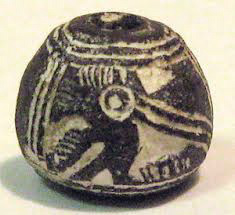
An important symbol also for the Chimu of coastal Peru.
It's good to hear there is an archaeological team onsite at Chirijie, until the site is properly evaluated i guess it's presumptuous to make any case strongly, my observations here were in terms of suggesting possibility.
I haven't suggested the Easter island petroglyphs aren't of Polynesian origin, what i have suggested is Polynesian influence in Ecuador from Easter island, in terms of a possible coastal colony.
The white kaolin infill is right for beads from Manteno culture, there are plenty of other examples to be found for sale online, the condition seen does seem remarkable in this case, but that doesn't automatically make them suspect, it would depend on provenance.
Birds are a common theme on Manteno beads, generally thought to be the pelican, when they appear to have arms and hands and fingers i'll call them 'bird men'...sometimes they have serpent characteristics also, sometimes though they're just birds.


An important symbol also for the Chimu of coastal Peru.
It's good to hear there is an archaeological team onsite at Chirijie, until the site is properly evaluated i guess it's presumptuous to make any case strongly, my observations here were in terms of suggesting possibility.
edit on 5-2-2013 by Kantzveldt because: (no reason given)
reply to post by Kantzveldt
I feel that Easter island was colonized by hawaiians first, before they became "Polynesians" in western Polynesia. This is how Easter island was settled without the pig and initially without the rat.
This would have been a very small founding population that left a very little "footprint" of its occupation.
From there the "proto polynesians" sailed to the mainland and onto western Polynesia where they acquired their " lapita/ polynesian" cultural package, of rats, pigs and chickens.
Those people later sailed back to the east and re colonized the islands of extreme eastern Polynesia.
I feel that Easter island was colonized by hawaiians first, before they became "Polynesians" in western Polynesia. This is how Easter island was settled without the pig and initially without the rat.
This would have been a very small founding population that left a very little "footprint" of its occupation.
From there the "proto polynesians" sailed to the mainland and onto western Polynesia where they acquired their " lapita/ polynesian" cultural package, of rats, pigs and chickens.
Those people later sailed back to the east and re colonized the islands of extreme eastern Polynesia.
edit on 5-2-2013 by punkinworks10 because: (no reason given)
Originally posted by Kantzveldt
reply to post by Byrd
I haven't suggested the Easter island petroglyphs aren't of Polynesian origin, what i have suggested is Polynesian influence in Ecuador from Easter island, in terms of a possible coastal colony.
Ahh. My bad!
However, even a coastal colony would have started by bringing their own food from Easter Island -- and most certainly pigs, which were economically and ritually important -- because they wouldn't have known what to eat and they probably wouldn't have liked the taste of unfamiliar food. You'd also expect to see the Polynesian rat spreading out from that source, since they're awfully hard to keep out of boats.
The white kaolin infill is right for beads from Manteno culture, there are plenty of other examples to be found for sale online, the condition seen does seem remarkable in this case, but that doesn't automatically make them suspect, it would depend on provenance.
Having found a figurewith this technique in a museum collection (now that I had a chance to look), I am more inclined to agree that they are authentic. I have, however, seen many online antiquities dealers offer fakes -- it's always been a problem in the antiquities collecting circles. A friend just paid some high dollar cash for what turned out to be very bad modern Egyptian faience. So when a non-museum site is used as a reference, I get a tad bit twitchy!
Birds are a common theme on Manteno beads, generally thought to be the pelican, when they appear to have arms and hands and fingers i'll call them 'bird men'...sometimes they have serpent characteristics also, sometimes though they're just birds.
Ahh. Thanks for the clarification. I'm not familiar with the culture, and appreciate your "Cliff notes" on it!
It's good to hear there is an archaeological team onsite at Chirijie, until the site is properly evaluated i guess it's presumptuous to make any case strongly, my observations here were in terms of suggesting possibility.
I did some searching in Spanish, which gave me more results than you got. The information at the Ancient Americas site was apparently out of date or entered by someone who doesn't read/can't search Spanish and Portuguese language sites.
new topics
-
Supreme Court Oral Arguments 4.25.2024 - Are PRESIDENTS IMMUNE From Later Being Prosecuted.
Above Politics: 49 minutes ago -
Krystalnacht on today's most elite Universities?
Social Issues and Civil Unrest: 58 minutes ago -
Chris Christie Wishes Death Upon Trump and Ramaswamy
Politicians & People: 1 hours ago -
University of Texas Instantly Shuts Down Anti Israel Protests
Education and Media: 3 hours ago -
Any one suspicious of fever promotions events, major investor Goldman Sachs card only.
The Gray Area: 5 hours ago -
God's Righteousness is Greater than Our Wrath
Religion, Faith, And Theology: 10 hours ago
top topics
-
VP's Secret Service agent brawls with other agents at Andrews
Mainstream News: 14 hours ago, 11 flags -
Nearly 70% Of Americans Want Talks To End War In Ukraine
Political Issues: 15 hours ago, 6 flags -
Sunak spinning the sickness figures
Other Current Events: 15 hours ago, 5 flags -
Electrical tricks for saving money
Education and Media: 13 hours ago, 4 flags -
Late Night with the Devil - a really good unusual modern horror film.
Movies: 17 hours ago, 3 flags -
Krystalnacht on today's most elite Universities?
Social Issues and Civil Unrest: 58 minutes ago, 3 flags -
Supreme Court Oral Arguments 4.25.2024 - Are PRESIDENTS IMMUNE From Later Being Prosecuted.
Above Politics: 49 minutes ago, 3 flags -
Any one suspicious of fever promotions events, major investor Goldman Sachs card only.
The Gray Area: 5 hours ago, 2 flags -
University of Texas Instantly Shuts Down Anti Israel Protests
Education and Media: 3 hours ago, 2 flags -
Chris Christie Wishes Death Upon Trump and Ramaswamy
Politicians & People: 1 hours ago, 1 flags
active topics
-
University of Texas Instantly Shuts Down Anti Israel Protests
Education and Media • 72 • : CriticalStinker -
Nearly 70% Of Americans Want Talks To End War In Ukraine
Political Issues • 71 • : SchrodingersRat -
British TV Presenter Refuses To Use Guest's Preferred Pronouns
Education and Media • 150 • : FlyersFan -
President BIDEN Vows to Make Americans Pay More Federal Taxes in 2025 - Political Suicide.
2024 Elections • 141 • : Euronymous2625 -
-@TH3WH17ERABB17- -Q- ---TIME TO SHOW THE WORLD--- -Part- --44--
Dissecting Disinformation • 664 • : 777Vader -
Hate makes for strange bedfellows
US Political Madness • 46 • : network dude -
The Reality of the Laser
Military Projects • 48 • : 5thHead -
Supreme Court Oral Arguments 4.25.2024 - Are PRESIDENTS IMMUNE From Later Being Prosecuted.
Above Politics • 1 • : network dude -
Candidate TRUMP Now Has Crazy Judge JUAN MERCHAN After Him - The Stormy Daniels Hush-Money Case.
Political Conspiracies • 744 • : Threadbarer -
Truth Social goes public, be careful not to lose your money
Mainstream News • 129 • : matafuchs

